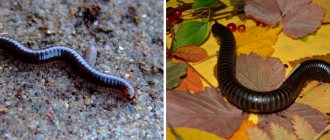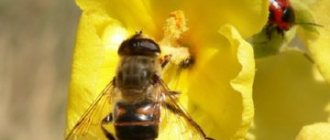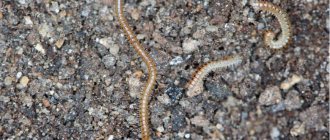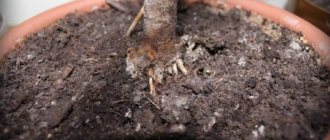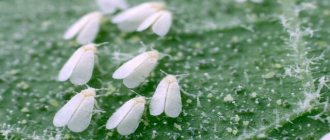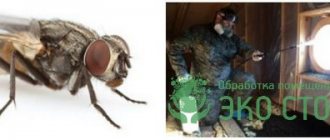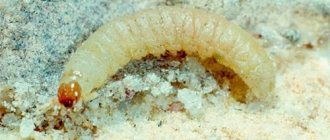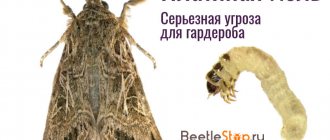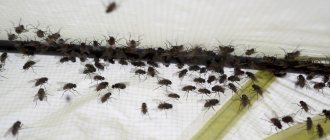Hot summer is coming, and you are already looking forward to enchanting evenings on your country veranda or in a cozy gazebo. The cool air is filled with the aromas of herbs and flowers, the leaves rustle quietly, and large stars shine. In the evening silence, you can especially clearly hear the itching of hundreds of mosquitoes and midges hovering above you with the most unambiguous intentions. There are sonorous claps of palms on various parts of the body, shattering the magic of the summer night.
From time immemorial, humanity has been fighting the damned bloodsuckers with all available means. Today, in addition to mosquito nets and fire smoke, summer residents can take advantage of modern inventions and medications. They make life in the lap of nature much easier and allow you to enjoy the fresh summer air without fear of being bitten from head to toe.
Who is threatening us?
In recent decades, the species diversity of winged bloodsucking insects in central Russia has increased significantly. Today the list of hostile creatures includes the following species.
- Squeaky mosquito and other types of mosquitoes. In this insect, only females experience a craving for human blood during the period of egg maturation. They need the protein-rich liquid to bear offspring. One female mosquito can attack a person up to eight times a night. During the day they hide in the cool shade, since they cannot tolerate temperatures above 28 degrees, and at dusk they fly out to hunt. When searching for a person, they focus on the heat emitted by the body and the smell of sweat.
- Midge. If mosquitoes have adapted to living even in megacities, then the midge prefers the banks of rivers and lakes. It is easily distinguished by the small size of its round and rigid body, as well as its wide oval wings. The bite is extremely painful, and the wound does not heal for a long time, because the midge does not pierce the skin with its proboscis, but bites off a small piece of skin and licks off the protruding blood. The consequences of the bite are quite unpleasant: the toxin contained in the saliva causes extensive swelling, and in some people, a severe allergic reaction.
- Midlings. In terms of body structure, these insects are similar to mosquitoes, but their sizes are very small - the body length barely reaches 2.5 mm. This allows midges to land on the mosquito net and crawl through the mesh to get into the room. Bites can cause symptoms of general toxicosis: a person’s temperature rises, weakness and nausea appear.
- Mosquitoes. Fortunately, these bloodsuckers are thermophilic and are rarely found north of the Krasnodar Territory. Small insects, the length of which does not exceed 3 mm, are carriers of a number of infectious diseases. At the site of the bite, a person develops severe itching, and dermatitis often develops.
The reproduction cycle of all of these species is associated with water in which the larvae develop. Therefore, in areas remote from bodies of water, the danger of being bitten is significantly less high than on the banks of rivers, lakes and ponds.
Varieties of midges
There are different types of midges; there are about four thousand species. They multiply at a tremendous speed, which makes it difficult to combat them. Each type is unpleasant in its own way. Some devour the fruits in your garden, while others bite and drink your blood.
The common name for the blood-sucking midge is midge. These insects are especially annoying. They get into your nose, ears, and mouth, and it’s difficult to get rid of such plaque. In appearance, they resemble ordinary flies, only smaller and fly faster. The midge prefers to live and reproduce near bodies of water, so if your dacha plot is located near water, be prepared for the appearance of an annoying buzzing infection at your dacha. Only females bite humans and animals; male midges feed on flower nectar and do not pester people.
The bite of such an insect is easy to distinguish from a mosquito bite. The midge bites the top layer of skin and produces saliva, which contains an anesthetic enzyme. The insect licks off the blood that comes out of the wound. After some time, the analgesic effect of the injected saliva ends, and the bite site begins to ache unpleasantly, turn red and swell. Allergic reactions are rarely caused by such bites; inflammation is a protective reaction of the body. Swelling from the bite of this pest lasts up to 5 days, all this time it hurts, itches and spoils the appearance, especially on the face. Under no circumstances should you scratch the bite site.
The fruit fly Drosophila is a favorite subject of study for biologists. It also lives in damp places near rivers, lakes and small ponds. Drosophila feed on plant sap and rotting remains of plant food. They are not so annoying, but they are unpleasant because they spoil the fruits growing in the garden.
The mosquito bite turns red and swells
Methods for controlling blood-sucking insects
You can fight mosquitoes and midges in different ways:
- by installing barriers that insects cannot penetrate;
- scaring away bloodsuckers with unpleasant smells or sounds;
- local or total destruction.
The means for waging this fight can be divided into the following groups:
- mechanical - nets, mosquito nets;
- chemical - all kinds of industrially produced repellents and insecticides;
- electric - various devices for scaring away or, conversely, luring and destroying insects;
- biological - using the characteristics of the life cycle of insects to reduce their population.
The best result is achieved, as in other areas of life, by implementing a set of measures that includes several different methods. This complex for each individual site should be developed individually, taking into account the characteristics of the microclimate, landscape, your habits and preferences.
Let's take a closer look at the main ways to fight for the integrity of your skin and a relaxing holiday in the country.
Mosquito net ProGarden 130x150cm black with Velcro
How to distinguish from a tomato mosquito?
You should get rid of pests immediately, but first of all, you need to determine exactly who is spoiling the crop. The tomato mosquito is very similar to the winged aphid, but it does a little less harm. The main difference between pests is the breeding season. The mosquito most often attacks seedlings, since it appears precisely during this period of time, while aphids hatch during the flowering period.
The mosquito is twice as large as the aphid; it damages the plant in a similar way, drinking the juice, but prefers to start from the top of the bush. Mosquito larvae are located in the ground, and therefore can damage a tomato from the root, especially with a large number of worms reaching 8 mm in length
They feed on roots, so it’s important to be careful
Barriers
The easiest way is to install breathable barriers that do not interfere with the ventilation of the premises, but at the same time do not allow harmful insects to penetrate inside. Our grandparents used tulle or gauze curtains for this, but to say that they created a reliable barrier means to sin against the truth. Today it is not difficult to buy ready-made mosquito nets for standard size windows. Products for doorways are equipped with convenient magnetic clasps and are often decorated with cheerful designs.
Essential oils against mosquitoes: method of use
The good thing about aromatic oils is that they absorb very quickly into any surface. Therefore, you can safely apply them to your skin, clothes and any surfaces in the house. Yes, and you shouldn’t be afraid that after using such a product, unsightly greasy stains will remain. If you buy high-quality oil, it will simply evaporate without leaving even the slightest trace behind.
Directions for use:
- Aromapaw
- Scented candle
- Oil-soaked fabric or wood bracelet
- Cream with added essential oil
- Essential oil spray
Repellents
Smells play a huge role in the life of insects, helping them accurately find food and avoid danger. Thus, they detect people and animals by the smell of the sweat they secrete, which unmistakably signals the female bloodsuckers about the presence of tasty fresh food. Consequently, by masking our own smell with some strong aroma, we send a message to the small vile: fly away from here, there is nothing interesting for you here.
Attention! In order for the disguise to work without failure, before using fragrances you need to thoroughly wash your body, removing traces of previously released sweat. For some insects, just one molecule per cubic meter of air is enough to detect food.
Folk remedies for repelling midges and mosquitoes
You will find most of the repellents in this group in your own kitchen, in the first aid kit or in the nearest forest.
- Sagebrush. To prepare an anti-mosquito tincture, collect the roots of fresh wormwood and chop finely, then pour boiling water over it and leave for half an hour. For a glass of chopped wormwood roots you need to take a liter of water. When the broth has cooled, apply it with a cotton swab or spray bottle to open areas of skin, spray door and window openings.
- Camphor. In any pharmacy you will find camphor alcohol, tincture or crystalline camphor. As dusk sets in and mosquitoes become more active, pour camphor from the vial into a small saucepan, place on the stove and evaporate the substance by heating over low heat. After this procedure, you are guaranteed a restful sleep throughout the night. If you pour the solution into a tin can and evaporate it over a fire or barbecue, then during the evening not a single mosquito will come close to the area where you are resting.
- Valerian. In the same way, valerian tincture is used, which has similar properties. True, in this case, a side effect is possible in the form of an invasion of cats in the summer cottage.
- Aroma oils. As practice shows, bloodsuckers cannot tolerate the smell of cedar, tea tree, basil, eucalyptus, clove, and anise oils. Evaporate a few drops of any of these oils in an aroma lamp to cleanse a room, veranda or gazebo. Mix the aroma oil with any cream and lubricate exposed skin.
- Vanillin. To effectively protect the skin, two or three packets of vanillin should be mixed with the cream until completely dissolved, and then applied to the face, arms and legs. You can dissolve the substance in water, vodka or alcohol and spray it on the skin and furniture.
Products applied to the skin do not last long. For them to work well, it is necessary to renew the protective coating every 1-2 hours.
Chemical repellents
A wide selection of mosquito repellents can be easily found in the specialized section of any supermarket. Repellents in the form of a cream or spray are applied to the skin for personal protection. The rules are, in general, the same as when using folk remedies: they need to be applied to cleanly washed skin and updated periodically. Unfortunately, they are not suitable for use at night: you will fall asleep peacefully without hearing the irritating mosquito ringing, but after a couple of hours the effect of the repellent will stop, and the bloodsuckers will attack your defenseless skin.
Electronic repellers
The action of a small but very effective device is based on the emission of ultrasonic waves in the range from 5 to 20 KHz. Most models operate on a 220 V network. There are also battery-powered mobile devices, but their power is usually low, so the range does not exceed 2.5 meters. The capabilities of network repellers are significantly higher: one device is enough to secure a country house, an open veranda or a spacious gazebo.
Insect repeller ENERGY 6W ultrasonic
Preventive measures
In order not to rack your brains about how to get rid of fruit flies or how to remove annoying fruit flies, it is enough to adhere to the usual preventive measures. After all, if midges start to appear, they will then begin to multiply quickly and will soon fly throughout the apartment. To prevent this from happening, you need to do this:
- Always remove trash from the premises on time.
- Clean the drainage areas, using chemicals or even occasionally pouring boiling water over them.
- The trash can, even if you use special bags, should be cleaned at least once a week.
- Products that have begun to deteriorate, even slightly, must be thrown away immediately.
If you follow the above tips, midges can disappear from your life forever and will not irritate you with their presence in the kitchen. When using any methods, folk or modern, it is possible to never encounter such a problem again.
Sometimes a person unexpectedly discovers small flying insects in his home. Moreover, these midges can be different in appearance: gray, red, white, black. It's time to think about whether they pose a danger, whether they bite, and how to get rid of them. These questions can be easily answered by understanding which small flying insects most often appear in a house or apartment.
Destruction of blood-sucking insects
Means for killing mosquitoes, midges and other midges are quite varied, and their choice depends on your goals and the number of flying parasites in your area.
Fumigators
The most common means of combating bloodsuckers is a fumigator - a device whose action is based on the evaporation of special substances that are harmless to humans, but paralyze the respiratory function of insects. A small heating element heats a plate impregnated with the active substance, or the porous core of a bottle with the corresponding liquid, causing active evaporation of the volatile component. After some time in the room, all mosquitoes are neutralized.
The device does not work outdoors due to the inability to create a sufficiently high concentration of the substance necessary to influence midges. It is advisable not to turn off the device after the disappearance of insects, since short-term exposure does not destroy, but only stuns mosquitoes. After the concentration of the substance decreases, the evil bloodsuckers often come to their senses and attack people again.
Electric fly swatters
The device resembles a tennis racket in appearance: an oval frame is attached to a handle and covered with a mesh, to which an electric current is applied. Any insect that touches the mesh is instantly struck by an electric discharge. Advantages of an electric fly swatter:
- autonomy - it does not require a connection to the network and runs on a battery;
- versatility - you can destroy not only mosquitoes, but also flies, horseflies, butterflies, beetles, and other flying insects;
- safety - the live wire is protected on both sides by membranes made of nylon mesh.
The device is indispensable for quickly getting rid of isolated bloodsuckers and carriers of infection that have made their way into a closed room.
Electric shock fly swatter ENERGY 5W 21x50.5cm
Insecticidal lamps
A special lamp generates radiation in the infrared range, simulating the presence of a living creature. Attracted by the heat, the mosquito lands on the grille of the lamp and is destroyed by an electric discharge. You do not need to run after every mosquito, since it will fly to the lamp itself and completely voluntarily sit on its electric chair. The device works effectively on the veranda, in the gazebo, in an open area, but only on the condition that the number of midges is not too large. If the midges fly in huge clouds at your dacha, you will need too many lamps to destroy them.
Insecticidal preparations
Is the dacha plot located in an area with high soil moisture and a tendency to waterlogging? Most likely, every night you are attacked by countless hordes of vile creatures. It is useless to fight them using the above methods - total genocide is needed here. Or rather, an insecticide. There are a huge number of different drugs to combat mosquitoes and midges. They are used to treat fences, grass, trees and shrubs, paying the greatest attention to bodies of water and their banks.
Many of the insecticides have a negative effect on humans, so treatment must be carried out in a protective suit to prevent contact with the respiratory tract, skin and mucous membranes. If you are not sure that you can reliably protect yourself, then it is better to contact professional exterminators who have everything they need to fight mosquitoes.
The effect of the treatment lasts for a month or two - just before the end of the summer season. It should be remembered that heavy rain washes the drug off foliage and other surfaces. As soon as good weather returns, the treatment will have to be repeated. In addition, other insects, including flower pollinators, also die along with mosquitoes. Therefore, you should not count on a good harvest of a number of garden crops and berries after processing the plot.
Treating Bites
In most cases, a midge bite is not too dangerous for humans, but it does cause a lot of discomfort. Even in the absence of an allergic reaction, the bite site is very itchy and itchy.
This effect can be reduced using various means:
- A solution of water and regular baking soda in a ratio of 1 teaspoon of sodium bicarbonate per glass of water. Has a calming effect.
- Ammonia. Before use, it must be diluted with water in equal parts.
- “Zvezdochka” balm, known since the times of the USSR. Has a cooling and distracting effect. Thanks to its composition, it can be used not only after a bite, but also to prevent it.
- Dairy products. An ancient folk method to reduce itching. Used chilled.
- Various pharmaceutical preparations, they are also used in cases of hypersensitivity to midge bites.
Useful tips
Although scientists have found that mosquitoes and midges can fly over 10 km in search of food, such long journeys are the exception rather than the rule. Most bloodsuckers are born, grow and reproduce within your area. If you make its territory as uncomfortable as possible for midges, its numbers will significantly decrease.
- Mow all the grass. This is where insects hide during a hot day. They do not tolerate heat and dry air well, preferring coolness and dampness.
- Drain damp, poorly ventilated and not exposed to sunlight areas, remove puddles, and organize drainage of the surface layer of soil.
- Avoid artificial ponds.
- Install an airtight container for the summer shower.
- Inspect water irrigation pipes, hoses, and taps. Even small leaks lead to the formation of puddles and spots of constant dampness.
Owners of neighboring plots should take similar actions. You won't be able to get rid of mosquitoes if they can breed unhindered in the thickets and puddles in your neighborhood.
Mosquito candle in a pot 13x6.5cm paraffin/wax
Prevention
There are practically no preventive measures against midges that overcome a person on the street.
True, here you can give some advice:
- Keep the area dry. Midges are always more active and reproduce faster near water.
- Get rid of dense thickets of grass and other wet greenery, thin out the beds.
- Build houses and feed insectivorous birds - they are your faithful allies in the fight against bloodsuckers.
What means do you use to kill midges?
ChemicalElectrical
As for the house, here we can recommend:
- Place mosquito nets on all windows. Cover the door with a frame with a mesh or hang a muslin blanket at the entrance.
- Use fragrant wormwood herbs, use aroma lamps with essential oils.
- Do not leave food outside refrigerators, hide them in containers. Take out the trash can regularly.
